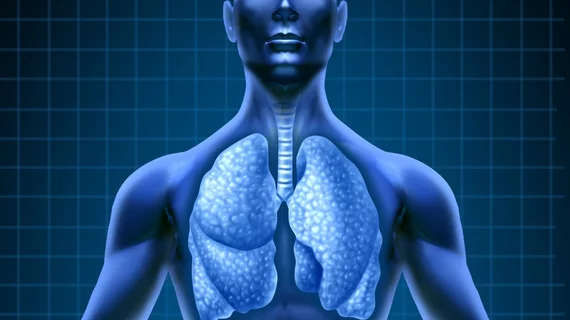AI diagnoses lung cancers in 20 seconds
Russian researchers from the Peter the Great St. Petersburg Polytechnic University (SPbPU) and radiologists from St. Petersburg Clinical Research for Specialized Types of Medical Care developed AI software that can distinguish and subsequently mark lung cancers on a CT scan within 20 seconds.
The AI software, dubbed Doctor AI-zimov, can detect lung nodules as small as 2 millimeters on CT scans, according to a prepared statement issued by SPbPU.
“Initially, we set up an algorithm to search for nodules starting from 6 millimeters, because radiologists themselves start the treatment of tumors of this size. But the system is so smart that it was able to find nodules of even smaller size,” said lead researcher Lev Utkin, PhD, of the SPbPU Research Laboratory of Neural Network Technologies and Artificial Intelligence in St. Petersburg, Russia.
Utkin and colleagues trained the software on 1,000 CT scans sourced from the Lung Image Database Consortium. Additionally, they tested the software on the CT scans of 60 patients with “successful results.”
The AI detects lung nodules on segmented CT scans. Points are randomly drawn on the surface of the lung nodule and then connected by lines, or chords. A histogram is created using the chords, and its length is reflective of the shape and structure of the tumor. The tumor is then placed in a cube so researchers can learn more about the nodule’s internal and external characteristics—including potential malignancy.
“Many different objects may be detected on the CT images, so the main task was to train the system to recognize what each of the objects represents,” Anna Meldo, head of the Radiology Department of the St. Petersburg Clinical Research Center for Specialized Types of Medical Care (Oncological), said in the same prepared statement. “Using the clinical and radiological classification, we are trying to train the system not only to detect tumors, but also to distinguish other diseases similar to cancer.”
Because the histograms are smaller and generally less complex than traditional CT scans, the AI system can analyze the nodules quickly. The researchers hope to reduce the time from 20 seconds to 2 seconds, allowing for a reduction in time needed for analysis and diagnosis.
Utkin et al. hope to apply their AI system to other organs and imaging modalities, including ultrasound and X-ray. Additional testing of their system is underway and will be utilized at the St. Petersburg Clinical Research Center for Specialized Types of Medical Care.

